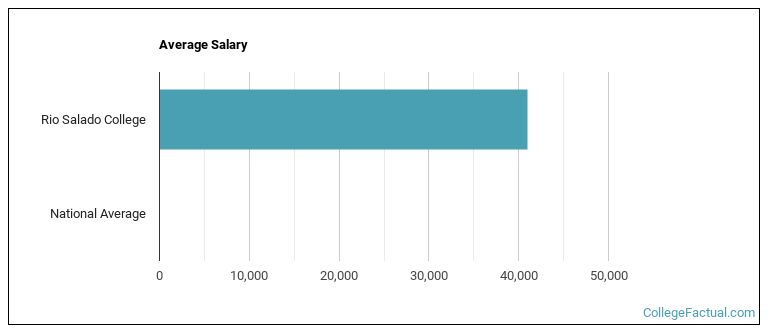 by our College Data Analytics Team
by our College Data Analytics Team
College Factual recognizes the best colleges and universities in its annual rankings. These rankings include categories for best overall colleges, best colleges for each major, best value schools, and much more.
Rio Salado College was awarded 15 badges in the 2025 rankings. The highest ranked major at the school is homeland security, law enforcement & firefighting.
Explore the best ranked schools for the programs you are most interested in.
College Factual ranked Rio Salado College as #1,128 out of 2,152 colleges and universities in the country on its 2025 Best Colleges list.
Rio Salado College is also ranked #19 out of 26 schools in Arizona.
As long as you meet basic requirements, you should not have any trouble getting into Rio Salado College since the school has an open admissions policy. Still, be sure to submit any requested materials and that your application is completed in full.
The student to faculty ratio at Rio Salado College is 28 to 1, which is high when compared to the national average of 15 to 1. This may indicate that some of your classes will be larger in size than they would be at other schools. However, upper level classes will probably be smaller.
In addition to the student to faculty ratio, some people look at what percentage of faculty members are full-time as a sign of how much time professors will be able to spend with their students. This is because part-time teachers may not be be on campus as much as their full-time counterparts.
The full-time faculty percentage at Rio Salado College is 100%. This is higher than the national average of 47%.
The freshmen retention rate is a sign of how many full-time students like a college or university well enough to come back for their sophomore year. At Rio Salado College this rate is 60%, which is a bit lower than the national average of 68%.
During the 2017-2018 academic year, there were 17,362 undergraduates at Rio Salado College with 2,634 being full-time and 14,728 being part-time.
| $0-30 K | $30K-48K | $48-75 | $75-110K | $110K + |
|---|---|---|---|---|
| $6,249 | $9,814 | $8,651 | $11,938 | $4,711 |
The net price is calculated by adding tuition, room, board and other costs and subtracting financial aid.Note that the net price is typically less than the published for a school. For more information on the sticker price of Rio Salado College, see our tuition and fees and room and board pages.
Almost 66% of college students who graduated with the class of 2018 took out student loans, but that percentage varies from school to school. At Rio Salado College, approximately 13% of students took out student loans averaging $3,474 a year. That adds up to $13,896 over four years for those students.

Get more details about the location of Rio Salado College.

Contact details for Rio Salado College are given below.
| Contact Details | |
|---|---|
| Address: | 2323 W 14Th St, Tempe, AZ 85281 |
| Phone: | 480-517-8000 |
| Website: | www.rio.maricopa.edu/ |
| Most Popular Majors | Bachelor’s Degrees | Average Salary of Graduates |
|---|---|---|
| Business Support & Assistant Services | 1,223 | NA |
| Criminal Justice & Corrections | 1,171 | NA |
| Liberal Arts General Studies | 340 | NA |
| Fine & Studio Arts | 307 | NA |
| Mental & Social Health Services | 166 | NA |
| Electrical & Power Transmission Installers | 73 | NA |
| Business Administration & Management | 64 | NA |
| General Business/Commerce | 60 | NA |
| Legal Support Services | 58 | NA |
| Entrepreneurial Studies | 50 | NA |
Online learning options are becoming more and more popular at American colleges and universities. Online classes are great for students who have busy schedules or for those who just want to study on their own time.
In 2022-2023, 6,820 students took at least one online class at Rio Salado College. This is an increase from the 6,582 students who took online classes the previous year.
| Year | Took at Least One Online Class | Took All Classes Online |
|---|---|---|
| 2022-2023 | 6,820 | 6,355 |
| 2021-2022 | 6,582 | 6,068 |
| 2020-2021 | 9,188 | 8,677 |
| 2018-2019 | 10,683 | 10,146 |
Footnotes
*The racial-ethnic minorities count is calculated by taking the total number of students and subtracting white students, international students, and students whose race/ethnicity was unknown. This number is then divided by the total number of students at the school to obtain the racial-ethnic minorities percentage.
References
More about our data sources and methodologies.